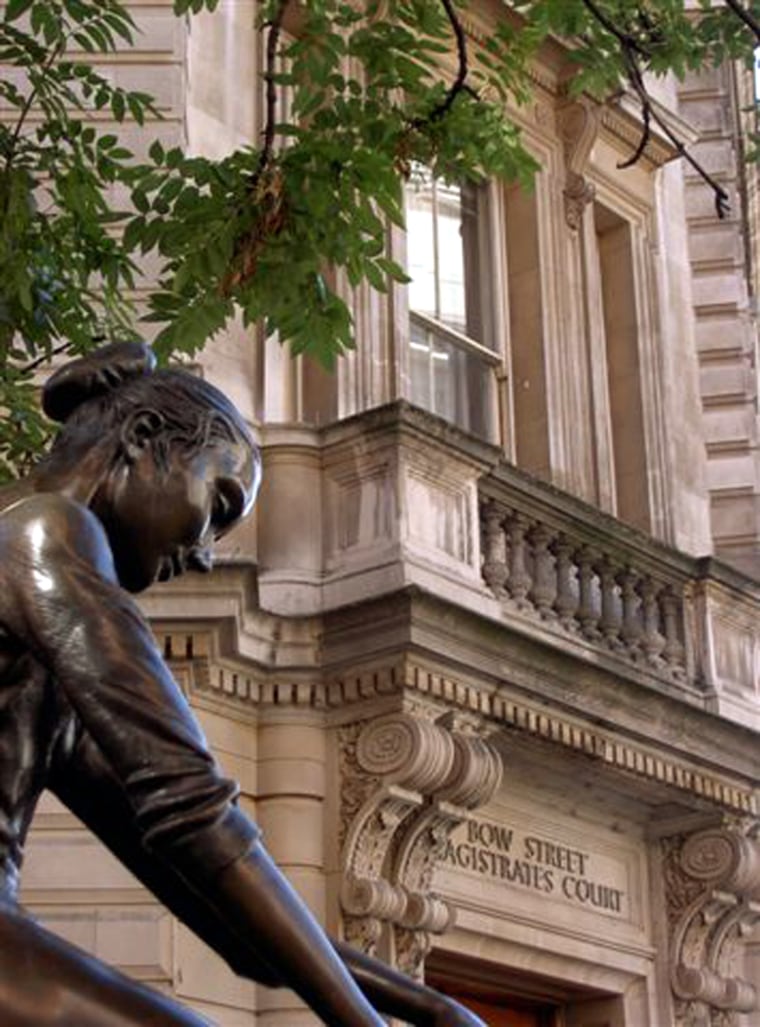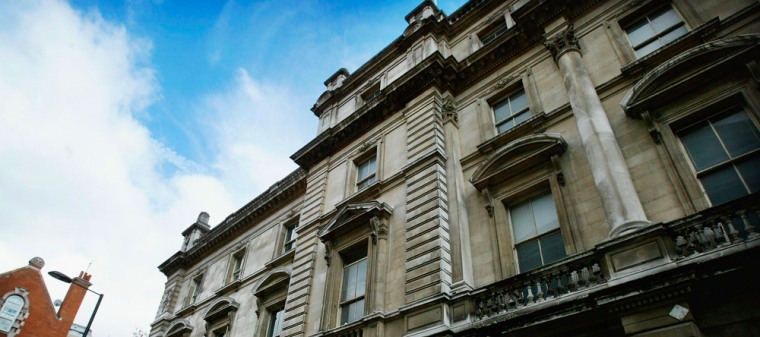If you are interested in purchasing a piece of British legal history, it will set you back approximately $21.5 million.
London’s most famous police station and court, Bow Street Magistrates Court, has a long and colorful legacy of playing host to the trials and hearings of some of the most notorious characters in British history.
But the legal story is about to come to an end, and at the right price, a new one is about to begin.
The Metropolitan Police Authority and Greater London Magistrates' Courts Authority [G.L.M.C.A.] have instructed that the court and police station next door be sold. The police station has stood empty since 1992.
The buildings are being marketed for a variety of new uses including “residential and commercial development” and "will be used to part-finance a new 10 court building on Marylebone Road, central London," said Ian Priston, press officer for the G.L.M.C.A.
The majority of interest in the site has come from developers interested in the aforementioned areas, but it has also had interest from other sectors, most notably as a possible site for a London Gay & Lesbian Museum.
The inspiration for the museum being housed on the site stems from Oscar Wilde's incarceration there when he was arrested and charged with gross indecency for being a homosexual in 1895.
The proposal has full backing from all the main mayoral candidates in London, and is the idea of gay rights campaigner Peter Tatchell. “Whoever gets elected, this museum is going to happen,” said Tatchell in June.
A brief history of the building
Bow Street, so called because the street is shaped like a bow, has been home to a court since 1740 when Thomas de Veil acquired the house at No. 4 and used it as a Magistrate’s office.

Henry Fielding took over the office in 1747, using it while he was a Justice of the Peace. Due to the widespread lawlessness in the area, Fielding formed a freelance group of “thief-takers” in 1754.
This group went on to become the Bow Street Runners and their consolidation with the “Peelers” force led to the foundation of the Metropolitan Police Act in 1839, creating the blueprint for modern police forces the world over.
In 1861 Queen Victoria objected to the blue lamp outside the police station, which had recently been introduced outside all British police stations, because it reminded her of the blue room in which her beloved Albert died every time she visited the Opera House in Covent Garden. Consequently the lamp was changed to a white one, the only London police station to do so.
A new purpose-built Bow Street police station and court, designed by Sir John Taylor in a Palladian style, was completed in 1881 and is the building that is for sale.
Famous visitors
Even before the turn of the 20th Century, Bow Street Magistrates Court was famous enough to be mentioned in "Oliver Twist" by Charles Dickens. In the novel the Artful Dodger was brought before the court for pickpocketing!
Oscar Wilde was charged in the court with gross indecency, after his failed attempt at charging his lover's father with libel for labeling him a homosexual.
The 20th century began with more infamy as American-born Dr. Hawley Harvey Crippen appeared before the court for murdering his wife and burying her remains in the cellar of his house. Crippen was found guilty and hanged at Pentonville Prison, London.
Rudolf Hess, Adolf Hitler’s deputy, also visited. His time in the court buildings was brief as he used the yard to exercise while trying to broker a peace deal.
Propagandists and gangsters
Also during the final days of World War II, Nazi propaganda broadcaster William Joyce, known as Lord Haw Haw, appeared before the court before being committed for trial at the Old Bailey for treason, for which he was found guilty and hanged.
In the 1960s East End gangster Reggie Kray, of the notorious Kray twins, was held in the cells after his arrest.
Recently the court has dealt with issues ranging from former Chilean military leader Augusto Pinochet’s hearing on torture and human rights charges, to extradition hearings for radical Muslim cleric Abu Hamza, and other terrorism-related arrests.
Paul Burrell, Princess Diana’s former butler, also appeared before the court when he was accused, and later cleared, of stealing several possessions belonging to her.
The future
The buildings, according to Adrian Turner of estate agents Collins CRE, are in need of modernization and as such would make ideal investment opportunities “for a whole variety of uses, from office to hotel, residential to retail, or wine bar and restaurant.”
Consent for the Grade II-listed police station building already exists for redevelopment into offices and a museum.
Whatever happens after the end of the sale, it’s apparent that justice needs to be done to this historic and character-filled building.
